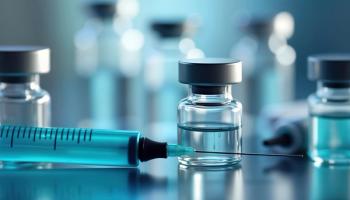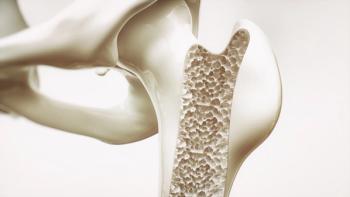
New Reimbursement May Level Playing Field for Biosimilars
The new Bipartisan Budget Act of 2018 (to be in effect on January 2019) institute new reimbursement guidelines for biosimilars under the Medicare coverage gap discount program that remove disincentives for biosimilar uptake and level the playing field for the future market place.
New biosimilars could play a key role in increasing competition and reducing prices, thereby improving patient access to innovative medications. Nonetheless, access could be limited by several factors. Higher costs related to manufacturing and regulatory burdens mean biosimilar manufacturers are inherently unable to lower prices to the same extent as generics. On the flip side, there is concern that driving down prices too low will remove the incentive for manufacturers to enter the biosimilar space. Addressing these challenges presents an opportunity to reduce drug costs and increase patient access.
An evolving obstacle facing biosimilar manufacturers is the Medicare Part D coverage design for biosimilars, according to the Association for Accessible Medicines. Biosimilars approved through the FDA 351 pathway are considered generic drugs. Under the Medicare coverage gap discount program, generic drugs are not required to adhere to the labeler agreement mandating manufacturers to pay a 50% discount in the coverage gap. As a result, biosimilar costs are split between patients (44%) and payers (56%). However, given the high cost of biosimilars relative to generics, this has the unintended consequence of incentivizing use of the branded agent over lower-cost biosimilars.
To take an illustrative example, consider an originator drug with a WAC price of $1,000 and two biosimilars, A and B, priced at a 15% and 20% discount, respectively. Assuming that the originator product is providing a 20% rebate and both biosimilars are providing a small rebate of 5% to the manufacturer, under the old program patients would end up with a higher co-pay for utilizing the biosimilars ($374 for Biosimilar A and $352 for Biosimilar B) than the more expensive originator product ($350 for originator). In addition, the cost to the payer is significantly higher for the biosimilars ($426 to $452) than for the originator ($120).
This approach makes it challenging for biosimilar manufacturers to compete with originators despite having lower WAC prices, as both patients and payers have higher liabilities for biosimilars. In our example, we consider agents that have a price range similar to that of insulins where follow-on biologics are currently available at discounted WAC prices relative to originators. A further reason for considering this price range is that patients on higher-cost biosimilars would fall in and out of the coverage gap phase with their first one or two doses and see less of an impact from this change.
Beginning in January 2019, under the Bipartisan Budget Act of 2018 (BBA 2018) biosimilars will be treated the same as other brand-name drugs in the Part D coverage gap with manufacturer discounts of 70%. The new law should help level the playing field, with the burden of originators and biosimilars on patients and payers determined via a similar mechanism-and more directly tied to the actual price of therapies.
With this in mind, we sought to examine the impact on patient out-of-pocket, payer, and manufacturer costs for branded and biosimilar agents using the same hypothetical agents. Under the new rule, the originator drug would cost $250 and $40 for the patient and payer, respectively. And the costs associated with the biosimilars would be tied to its WAC and net price and result in cost within the range of the originator for patients and payers. Although short-term costs may go up for biosimilar manufacturers, the law places them on an equal footing to originator biologics in terms of cost to the patient. This could translate to long-term benefits for these manufacturers. Overall, there is hope that lower patient costs will translate into more patients having access to and using biologics, which could in turn increase market share and revenues for biosimilar manufacturers.
The impact of this law is limited to Medicare, specifically, Part D drugs. While some biosimilars are billed under Part B, all of the biosimilars currently on the U.S. market are Part D eligible. Medicare formulary decisions sometimes influence commercial formularies, which could extend the impact of this change. The president’s FY2019 budget proposal also proposes consolidating coverage of Part B drugs under Part D, where price competition is better structured and prescribing decisions are not tied to economic decisions, according to the Henry J. Kaiser Family Foundation. If implemented, this shift could further expand the impact.
While barriers still exist, this change in the Medicare coverage gap program represents a small step toward encouraging biosimilar development, containing drug prices, and improving patient access. The full impact of these and other changes in the Bipartisan Budget Act of 2018 is hard to predict, but will be realized in the coming years.
Joanne Mai is a principal in the Global Pricing and Product Strategy line of excellence at Precision For Value. Joanne is responsible for leading client engagements to provide strategic and tactical insights on global pricing and market access endeavors. Joanne brings 2 years of research experience and 8 years of consulting experience in a variety of therapeutic areas, including oncology, autoimmune disease, cardiovascular disease, and neurological diseases. Prior to Precision, Joanne spent time at PriceSpective (now Icon, Plc) and Quintiles Consulting (now IQVIA).
Andrew Cournoyer, RPh, MBA, is vice president – director, Payer Access Solutions for Precision For Value. Andrew brings 15 years of experience within the managed care payer industry having worked primarily with integrated health plans on regional and national levels. He has served as a past formulary decision maker across multiple lines of business and his roles have spanned across pharmacy and medical benefits including involvement with a variety of reimbursement methodologies and integrated care delivery models. Before joining Precision, Andrew served as Head of Formulary and Utilization Management for Aetna Medicare and also spent time managing commercial and specialty drug management at Cigna and Tufts Health Plan.
Newsletter
Get the latest industry news, event updates, and more from Managed healthcare Executive.





















































